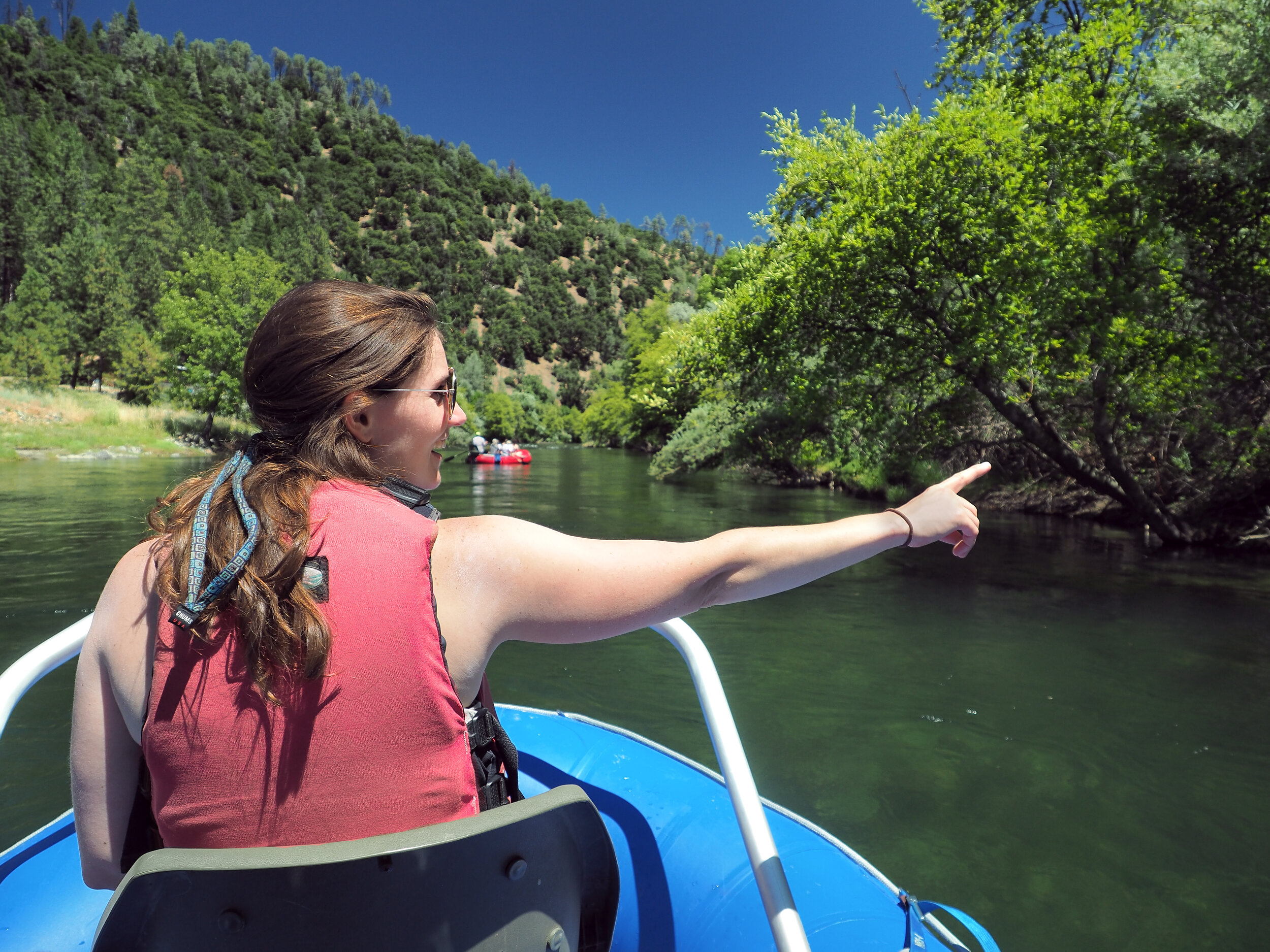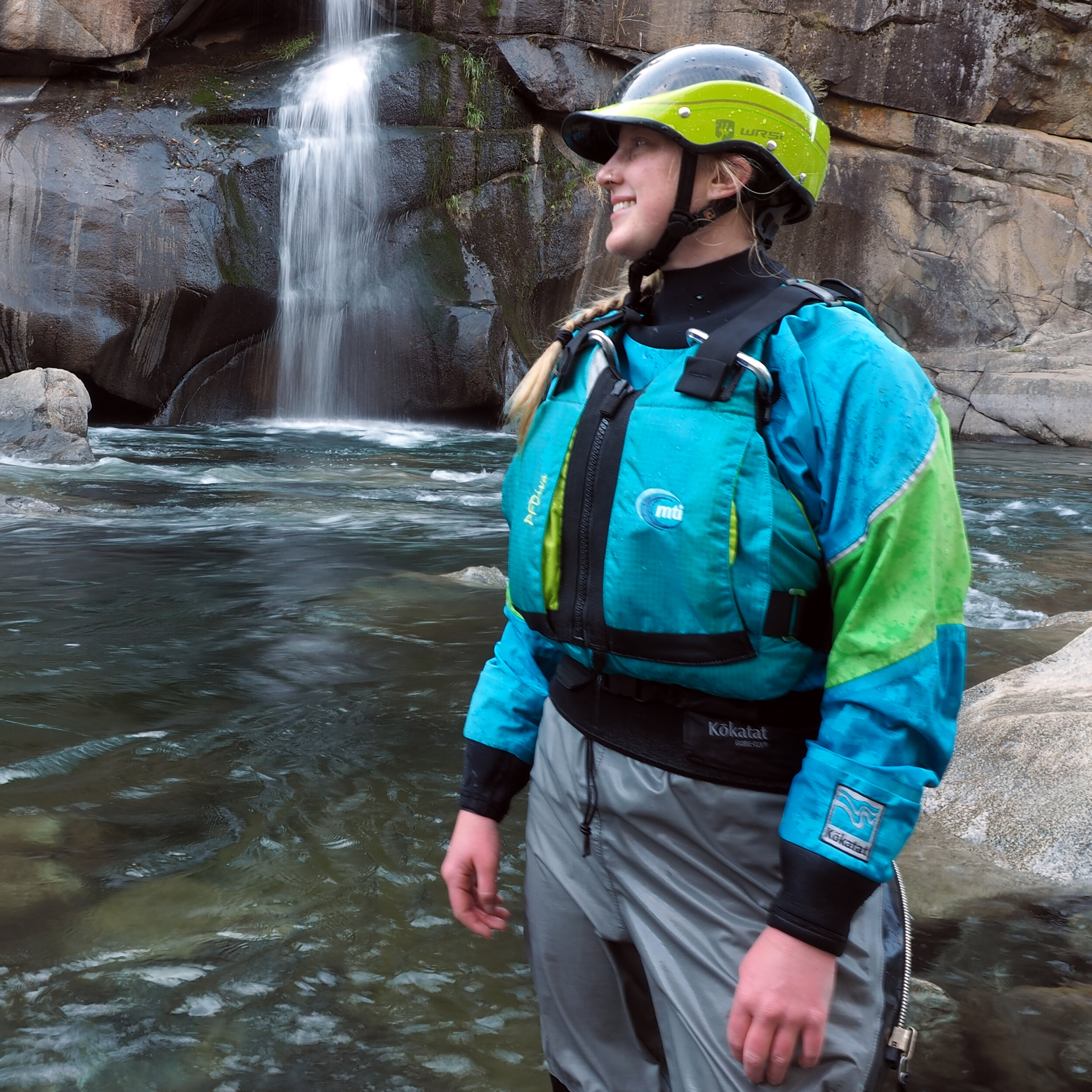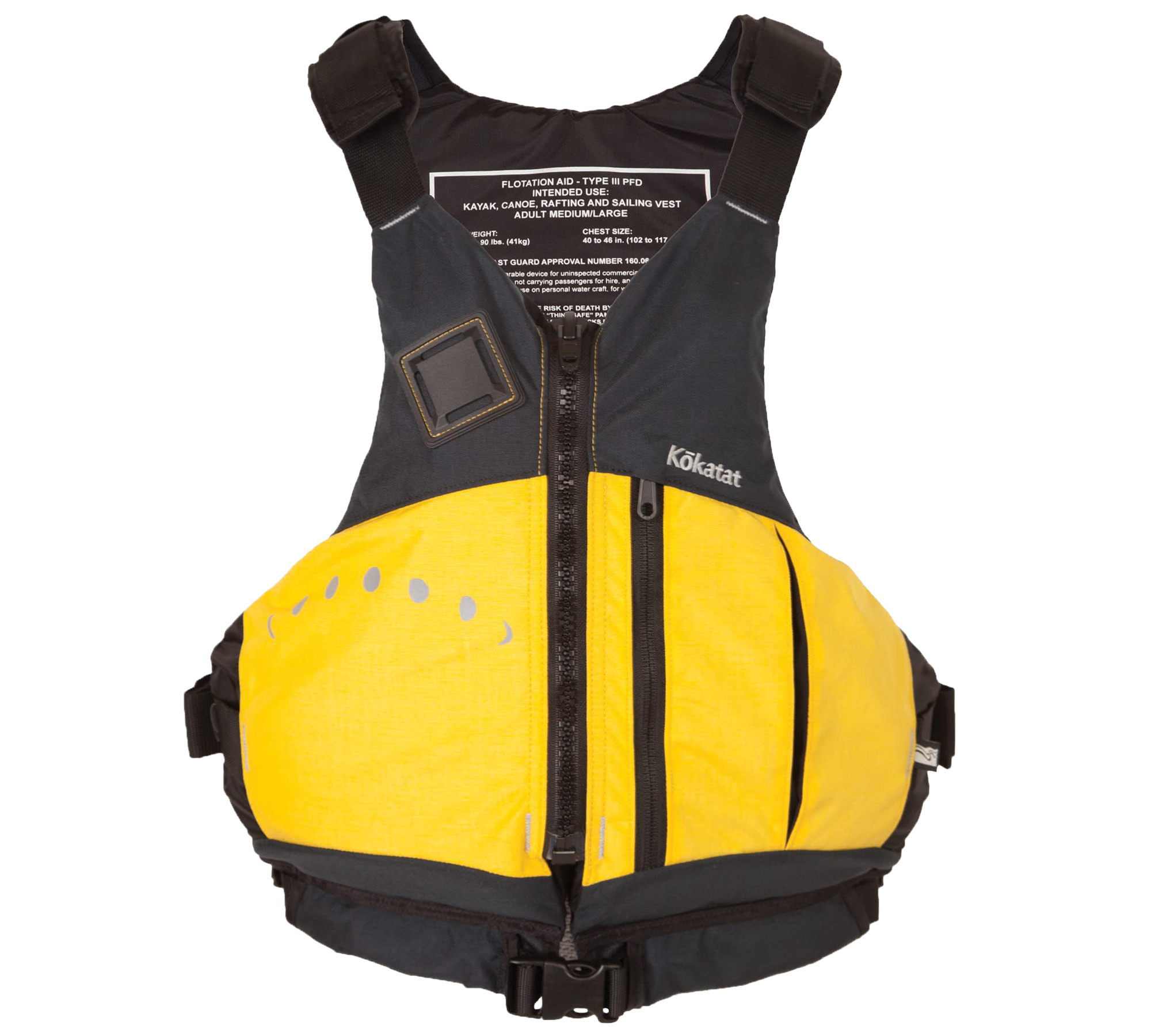Welcome
Subscribe today for some amazing stories and content from our expedition team or find an outfitter for your next adventure.

Subscribe today for some amazing stories and content from our expedition team or find an outfitter for your next adventure.
Shopping for a new Life Jacket or more accurately Personal Flotation Device (PFD) can be daunting with all of the types and shapes out there a lot of boaters ask us “What PFD should I buy?” When you are shopping for your first PFD or one for friends boating with you stick to a type III PFD intended for whitewater use. We have put together a helpful buyer’s guide at the bottom of the page with some recommendations and you can learn more about basic PFDs below.

The US Coastguard sets the standards in the United States for performance and design characteristics for PFDs. There are 5 categories of PFD and it is important to note that the higher the number does not mean a better PFD. The types designate broad categories of how the PFD is designed to be used. There are 5 categories of PFD and generally 2 subcategories: inflatable and inherent buoyancy. Inflatable PFDs are not designed for river use and are generally designed as emergency PFDs like the type you find on Airplanes. Inherent buoyancy PFDs are generally made from closed cell foam and are effective as long as you are wearing the PFD and often when you are unconscious.
Best for all waters, open ocean, rough seas, or remote water, where rescue may be slow coming. Abandon-ship lifejacket for commercial vessels and all vessels carrying passengers for hire.
For general boating activities. Good for calm, inland waters, or where there is a good chance for fast rescue.
For general boating or the specialized activity that is marked on the device such as water skiing, hunting, fishing, canoeing, kayaking and others. Good for calm, inland waters, or where there is a good chance for fast rescue. Designed so that wearing it will complement your boating activities:
Designed as a thrown flotation device to provide additional buoyancy to a person in the water. This type of PFD is not designed to be worn and generally comes in 2 forms:
A square seat cushion style (i.e. commercial airline seat)
Ring Buoy (commonly found in pool areas)
Only for special uses or conditions. See label for limits of use:
Hybrid Inflatable PFDs
Canoe/Kayak Vest
Boardsailing Vests
Deck Suits
Work Vests for Commercial Vessels
Commercial Whitewater Vests
Man-Overboard Rescue Devices
Law Enforcement Flotation Devices
If you are less experienced on whitewater you don’t need a PFD with every feature, in fact it is not a good idea to get a rescue vest with every bell and whistle…maybe keep the whistle though. Rescue PFDs have extra hardware integrated into it which can be a danger for people not trained in their use since these PFDs have additional equipment which can snag on things.
If you have not been through swiftwater rescue or you don’t have a class planned, it is best to stick with a Coast Guard Approved Type III PFD (or CE/Transport Canada) designed for whitewater.
If you want to learn more you can check out the Coast Guard PFD Guide. Your local paddling store can help you decide which whitewater PFD is best for you and you can try them on to see which best fits your body type since one size definitely doesn’t fit all.
Lots of folks ask us how much flotation a person requires to keep them afloat. The USCG minimum recommendations are 15.5 - 22 lbs of flotation for buoyant foam PFDs. This is the minimum amount of flotation needed to keep your head above water in calm conditions. If conditions are rough the USCG recommends even more flotation

Interestingly enough the leaner you are the less buoyant weight you are carrying thus requiring more flotation from your PFD. If you carry more buoyant weight on your body the less lift you require from your PFD.
The formula of your body composition in regards to buoyant and non-buoyant weight will help you to figure out how many ponds of flotation you need. This guideline is a bit of an over simplification since we have to assume some broad generalities for paddlers. According to Dr. Kravitz and Heyward at the University of New Mexico they place the average percentage of water in the human body at 72%.
Because people’s body water content varies throughout the day, and the effects of aerated water vs calm water applying any standard formula will be wildly inaccurate. All of the calculations required being both complex and dynamic creates a headache for new paddlers thus we recommend you stick to the USCG recommendation of 15.5-22 lbs.
If you are running a lot of highly aerated water or big water runs a higher float PFD is recommended. The added flotation will keep you aloft in more turbulent water. Spring runoff seasons are the most common times that you may benefit from a higher float PFD. The downside to these higher float PFDs is that they are often bulky and uncomfortable.
Lower float PFDs are definitely more comfortable, however they provide less flotation and will have a harder time keeping your head above water. This may be less of an issue for more placid rivers like class III fishing trips, but if you have a lot of lean muscle you may need to get a higher float PFD regardless.
Our friends over at MTI Adventure wear came up with this handy guide on PFD care and routine maintenance. Like any piece of gear it is important to clean and maintain your gear as the water can take its toll on wet gear.
Rinse after use, especially after use in salt water. Hang to dry away from sunlight.
Hand wash in mild detergent to help prevent mildew, rinse and hang to dry. We like McNett’s Wetsuit and Drysuit Shampoo. McNett’s MiraZyme is good if your PFD has developed a funk, or you can use all natural Surf Remedy to shed the stink!
Inspect PFD for tears and holes, be sure zippers and buckles are working properly. If material is faded the fabric has probably lost strength. Foam deteriorates over time, so test your PFD and be sure it keeps your mouth out of the water. If you notice fraying of fabric or straps, serious UV damage, or crushed foam, please discard and replace with a shiny new PFD.

Comfort is critical in a PFD. Many people purchase PFDs without knowing how they will feel or what they link. Some PFDs are not designed for women and can put a lot of pressure on your chest. Others may be designed for people with long torsos and can feel like a corset if you have a short torso. Some PFDs can feel like a tire around your waist and make it difficult to remount the raft.
Consider the comfort of the PFD and the wearability. Color choice should also be high on your list. The coast guard or transport Canada only authorize certain colors for production in the US and Canada. Many of these standards are also similar in the EU. This does ensure that most PFDs will be highly visible in a variety of conditions. Color choice thus largely comes down to personal preference, however it is important to take note of where you spend most of your time on the river. If you’re running mostly hot desert rivers you may want to reconsider black as your PFD choice since it tends to get much hotter in the summer months.
Pockets are also a big this on PFDs. If you are a casual private boater or you are a newer guide, a couple pockets are good for some snacks or a flip line. It’s nice to have a few personal effects stowed somewhere close at hand while also following the clean principal.
Our friends at Stohlquist offer this advice for maximum PFD longevity:
Protect your PFD from extended Ultraviolet light exposure (sun), and the extremes of hot and cold to minimize premature aging. There are many products available that may be used on the exterior of the vest to help guard against UV degradation.
Sitting on your PFD or stuffing it under deck rigging will ruin/compress the soft foam quickly. This can lead to premature wear or loss of buoyancy.
PFD models with higher denier shell fabrics are the most resilient and wear resistant. All of Stohlquist's top of the line whitewater/touring/and recreational PFDs use highly durable 500D fabrics.
A PFD can last you 3 months or 5-10 years depending on use. The average life of a PFD, for average paddlers, is about 5 years given normal wear and care.
Since all PFDs manufactured for North American and EU markets meet nearly identical and stringent standards, you can generally expect your PFD from any major manufacturer to last a similar minimum length of time. Some Manufacturers have reputations for longevity among their gear, but in all cases it depends upon how hard you are on your gear.
PFDs should always be in a serviceable condition free from mold or mildew, especially on the floatation elements. It is a good idea to test the flotation of a PFD at the beginning of every season. If you boat 12 months out of the year it is a good idea to check quarterly.
Give the tabs and webbing a good firm tug and if something rips take the PFD out of service immediately. Look for signs of fading and UV damage on the PFD. This can be a sign that the material is weak and has lost strength. Additionally it likely will not be apparent, but UV damage on the outside of the PFD can be a sign that the internal foam also has some UV damage.
Rips and tears in the material anywhere is a serious red flag. Likewise, if you see any of the internal foam pulling out, definitely pull that PFD from service immediately.

MSRP $119.95
Pure and simple, the YTV incorporates Astral’s freestyle inspired Torso Lock™ foam platform. A low-profile fit offers plenty of mobility to a wide range of paddlers and sailors.
Entry: Pullover
Foam Insert: PVC Free Gaia®& PE Foam
Shell Fabric: 200 x 400 Denier Ripstop Nylon
Liner Fabric: 200 Denier High Tenacity Nylon
Webbing: Polypro
Weight: 1.76 lbs / 28.16 oz / 798.32 gr
Design Buoyancy: 16.5 lbs

MSRP $149.95
The Rocker is the perfect low-profile vest for long days on the water. The comfort and performance of this vest have quickly made it one of our most popular among whitewater boaters and SUP paddlers. Multiple pockets allow you to carry all the needed essentials; While the low cut, offset front-zip makes entry and exit simple.
Ergonomic WRAPTURE™ shaped torso with Cross-chest cinch harness adjustment eliminates ride up
6 Adjustments, side pulls, and front waist buckle closure
Ventilated lumbar pad
Free-floating suspended shoulder straps stretch as you move
Ballistic nylon shoulders have stiffeners for portaging and added protection
High visibility 3M™ reflective accents
D-ring to park your whistle, keys, or chapstick
Hands free expandable mesh beverage pocket
Large, streamlined main pocket for secure storage
Front accessory lash tabs for river knife or strobe attachment
USCG and Transport Canada Type III PFD with sea level buoyancy of 16 lbs. 8oz.

MSRP $99.00
The Aries PFD offers recreational paddlers the ultimate in comfort, safety, and value. Its low-profile design gives unrestricted freedom of motion, ideal for whitewater or sea kayaking, while its high back with thin PVC-free GAIA® foam inserts fit comfortably against the high-back seats of most recreational and sit-on-top kayaks.500 denier Cordura® outer shell
Gaia® PVC-free foam
Adjustable low profile front entry design
High back to accommodate higher seat backs
Self-draining front pocket
BUOYANCY LB./OZ. youth L/adult XXS (14/4, USCG approved only), XS/S (16/0), M/L (16/8), XL/XXL (17/8)

MSRP $129.95
Originally designed for freestyle kayakers, the Ninja PFD's athletic low-profile design stays out of the way and off your mind for comfortable paddling or rowing in any craft.
The Ninja is a Type III, low profile PFD delivering 16.5 lbs of flotation.
The Ninja's athletic design won't interfere with paddling, rowing or swimming.
Four side adjustments and two shoulder adjustments provide a custom fit.
Soft PVC-Free foam flotation panels are shaped for comfort.
A floating front panel adjusts to your body's shape and gives you a warm place to put your hands when it's chilly.
The side entry is secured by quick release buckles, making it easy to put on and take off.
Soft, stretchy fabric on the inside lets the Ninja PFD flex, and enhances breathability.

MSRP $149.95
The Ultimate Blend of Fit & Performance designed with specifically for female paddlers.
Adjust-a-Bust fit system supports and reduces pressure on the bust
Racerback design provides freedom of movement
Premium 500D Cordura® shell, Z-STRAP side webbing cinch down and 3D mesh liner for snug comfortable fit
Fleece hand warmer pockets plus 2 slimline zippered cargo pockets
Lash tab and Daisy Chain Attachment System on back
Reflective trim and tethered whistle
Design Buoyancy 16lb 8oz
USCG Type III